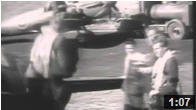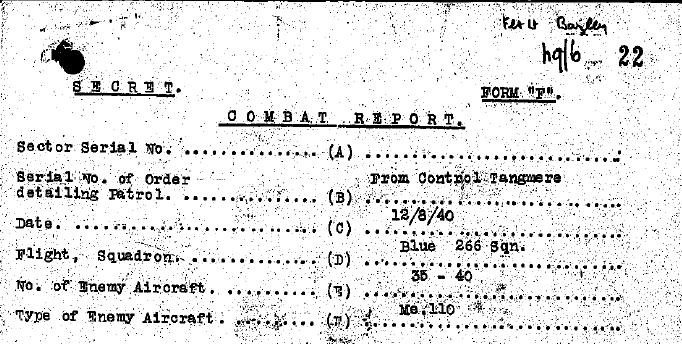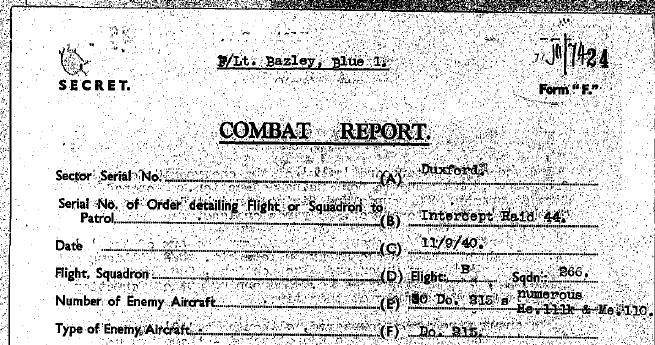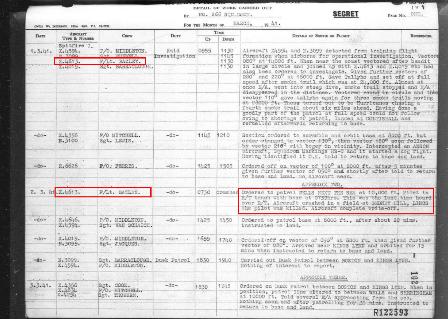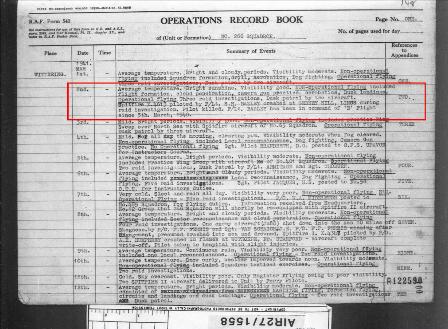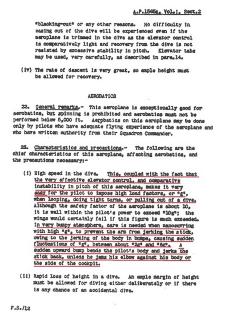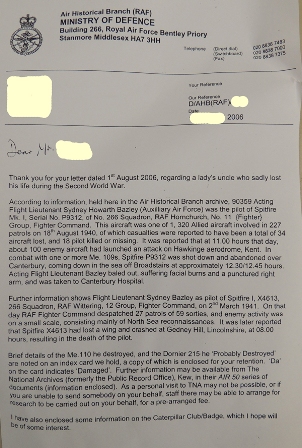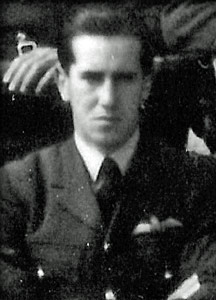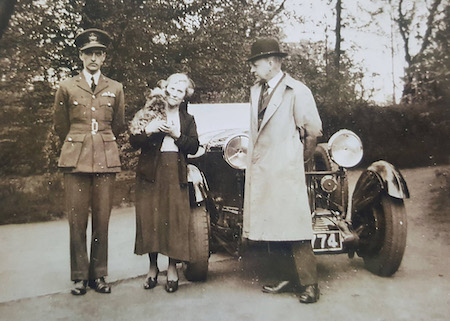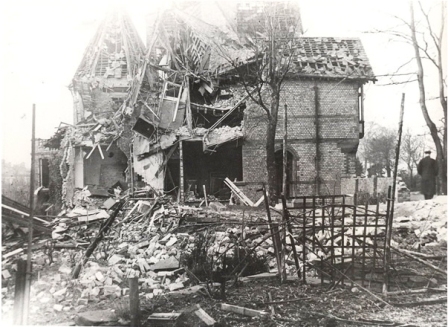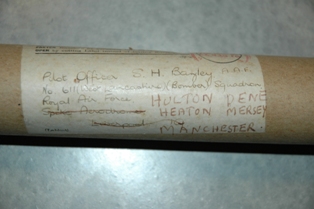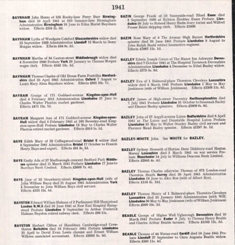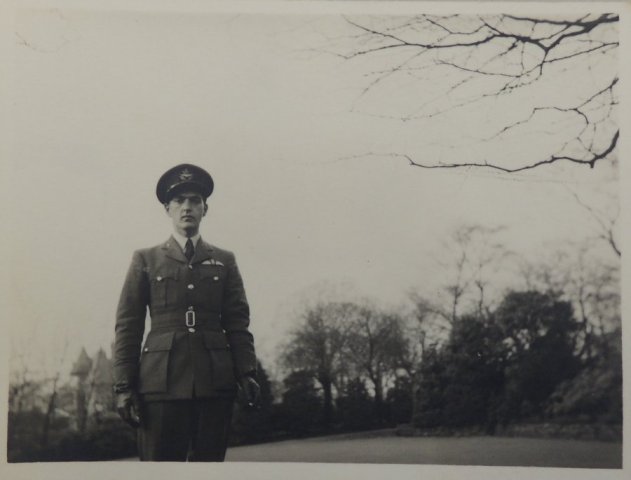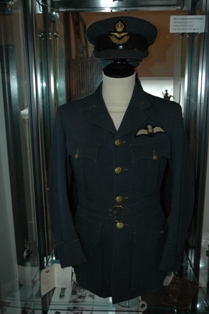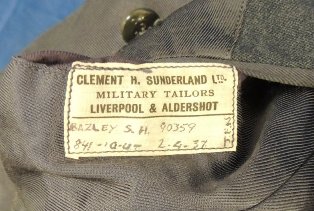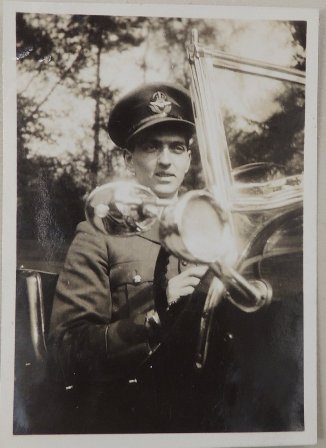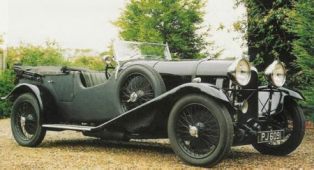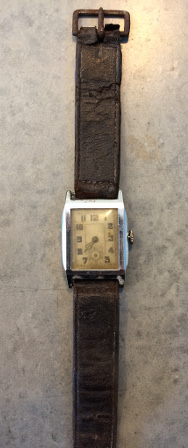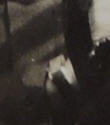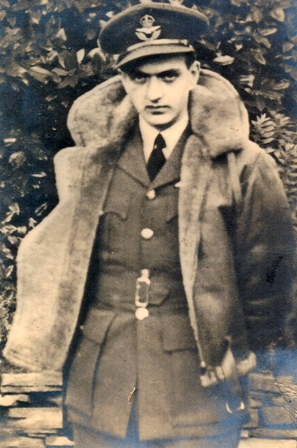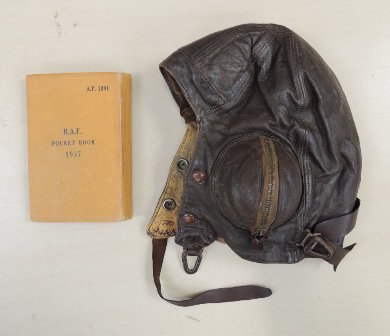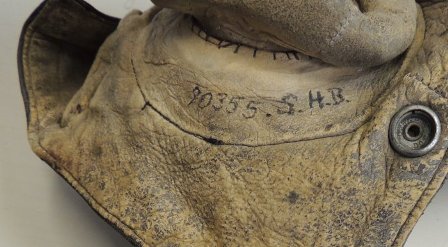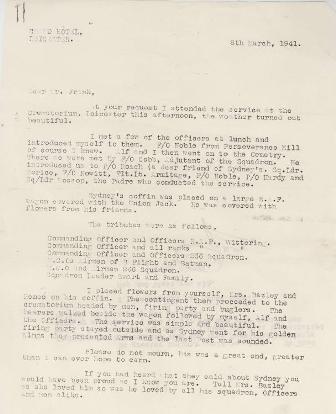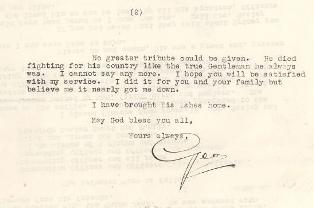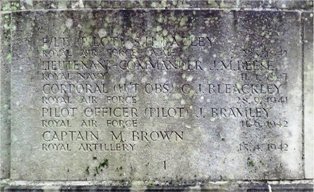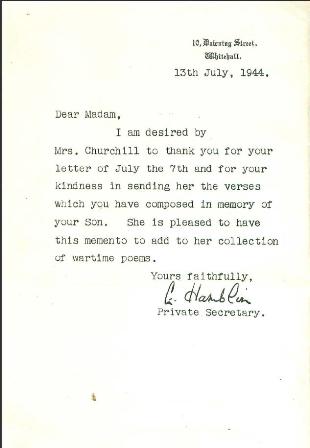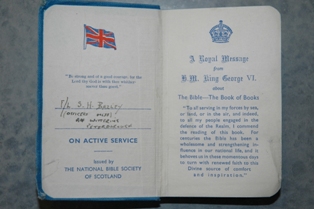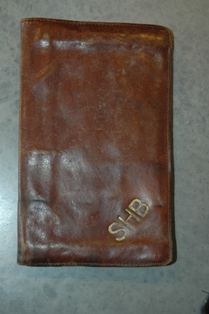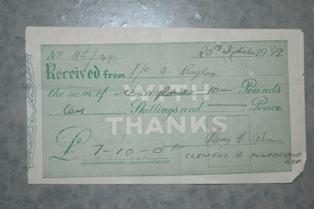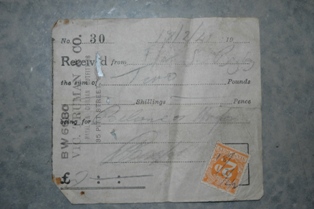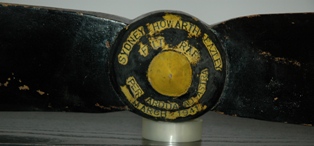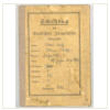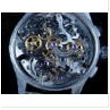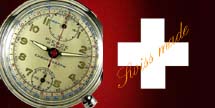
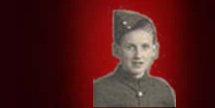
| HOME |
| THE WATCHES |
| WWII MEMORIES |
| CONTACT |
| GUESTBOOK |
Personal artifacts Battle of Britain Pilot Flt./Lt. S.H.Bazley R.A.F.
|
Battle of Britain Pilot: Awarded medals: Career:
611 Squadron Squadron line-up at summer camp at Ramsgate, 1937 Photo: 611 Sqn Collection, courtesy of A.Ferguson, archivist 611Sq.
enlarged section of group photo with Bazley in centre....
266 Squadron No. 266 Squadron RAF was reformed, after it was disbanded on 1st of September 1919, on 30 October 1939 at RAF Sutton Bridge as a fighter squadron. The squadron was one of the Rhodesian gift squadrons and was named 266 (Rhodesia) Squadron in honour of the gift. Originally it was equipped with the Fairey Battle light bomber, but soon after in January 1940 it received the Supermarine Spitfire and became a fighter squadron. It was in action over Dunkirk in early June and fought in the Battle of Britain. To rest the squadron it was moved north to RAF Wittering to carry out patrols over France. The 622 had the squadron code "UO" on the side of their planes. Some scarce footage of 622sq. in action during the Battle of Britain can be seen on the video below. In January 1942 the squadron moved to RAF Duxford and re-equipped with the Hawker Typhoon. The squadron changed role to fighter-bomber in support of the Normandy invasion and flew also armed reconnaissance missions in support of the invasion forces. The squadron moved along with the fighting forces and was disbanded at Hildesheim, Germany on 31 July 1945. During his time in the RAF in 611 Sq. and 266 Sq., Sydney H. Bazley had a few daunting moments which are recorded in the flying records and combat records. On 15th July 1940 Spitfire aircraft N3245 damaged after landing heavily during night flying practice. Pilot Flt Lt S.H. Bazley was uninjured. On the 16th of August 1940 at 12:45pm he suffered burns and minor injuries after he was shot down by a Bf109 and bailed out of his Spitfire MkI (P9312) near Canterbury Image taken of Bazley in hospital on 23 aug 1940 after he bailed out Here's a full account of the action of that day, 16th august 1940, regarding 266 Sq.: Squadron leader Rodney Wilkinson’s 266 Squadron had moved from Wittering in 12 Group to Hornchurch just two days previously (move from Wittering to Hornchurch 266 Sq. on the 14th of august 1940) and had yet to see any intensive combat during the Battle of Britain. At Wittering,, Wilkinson’s Spitfires flew the usual round of monotonous convoy protection patrols around the east coast, chasing off enemy raiders. Since Dunkirk, however, the Squadron had not clashed with the Me 109; time and time again throughout the summer of 1940, inexperienced squadrons would move into the combat zone only tob e decimated on their first substantial intercept. They were unprepared for the massively increased and vicious tempo of battle caused by the precense of Me 109’s – the experience simply traumatic, as 266 Squadron was about to discover. As hauptmann Karl Ebbighausen led his II/JG 26 Stabsschwarm back out over Deal, heading back to Marquise, Squadron Leader Wilkinson led seven 266 Squadron Spitfires down to attack the enemy escort fighters. In the subsequent combat, Ebbighausen disappeared, the third II/JG 26 Kommandeur to be lost in just three months. The 266 Squadron, however, was virtually annihilated: Squadron Leader Wilkinson crashed in flames and was killed at Eastry Court, near Deal, and pilot Officer N.G. Bowen’s Spitfire N3095 also became a ‘flamer’, the 20 year old pilot being killed, his fighter crashing at Adisham. Spitfire P9312 was also set alight, and crashed near Canterbury, but fortunately, the Pilot Officer and commander of B-flight, Sydney Howarth Bazley baled out with burns and minor injuries. He would be promoted to Flight Lieutenant on the 3rd september 1940, which was roughly two weeks later. Sub-Lieutenant Henry la Fone Greenshields, a Fleet Air Arm pilot serving with Fighter Command during this desperate hour of need, was reported missing: persued over the Channel and shot down by Leutnant Gerhard Müller-Dühe of II/JG 26, his spitfire crashed and burnt out in Calais, the 22 year old pilot being buried in France. Pilot Officer S.F. Soden’s Spitfire was badly damaged and forced-landed near Faversham, the pilot slightly wounded; Sergeant Eade came off best: although his aircraft was badly damaged over Canterbury, the pilot was unhurt. Of the seven Spitfires that Wilkinson had led into battle just a few minutes earlier, by the combat’s conclusion five had been shot down, with three pilots killed, including Wilkinson himself, two more wounded and a further aircraft damaged. This outcome was absolutely disastrous, 266 being withdrawn from the front line a few days later.
From the records of the RAF it could be retrieved that Bazley has at least flown the following Spitfire's during his career: Spitfire MkI serial: L1053 Parts of X4613, the actual Spitfire MKIa in which Bazley had his fatal flying accident
The 266 Sq. record book states the following about the fatal crash of X4613:
The Operations Record Book states the following about the incident:
In the book “Spitfire The History” from Morgan and Shacklady it’s mentioned on page 91 that the MKI’s wings could come off when the plane was taken beyond its designed 10G structural integrity . This is also mentioned in this official RAF document: Furthermore this document seen below from the RAF archive, also states that Bazley was killed at Gedney Hill because his Spitfire X4613 lost a wing. A 10 march 1941 dated letter written to the mother of Bazley from fellow BoB pilot and good friend of Bazley, P/O R.J.B.Roach, who flew the mission with Bazley that day could shed some light why there are contradictional testimonies about the incident. In this letter, R.J.B.Roach explains that the plane could have crashed by enemy fire of a German bomber, a collision with the enemy bomber or failing of structural integrety of the starboard wing.
photograph above is a period image of P/O Robert James Bain Roach Personal: Born in Stockport, Lancashire on the 3rd of November 1913. Only son of Francis Howarth Bazley (Frank) born 28th jan 1876-died 4th feb 1942 and Beatrice Broadbent born in 1875 at Antrim, Belfast . Frank and Beatrice married in 1909 in Ormskirk, Lancashire. They lived at Spring Bank House, Chorlton Fold, Bredbury, Stockport and had two servants. In 1901 Frank H Bazley lived on Chelford Road, Knutsford with his father Charles H Bazley, a retired cotton spinner. Frank was working as a civil engineer, he was born in Salford, Lancashire. Photograph above: Bazley with parents Beatrice and Frank. In the background the Lagonda. Frank was a son of Charles Henry Bazley and Alice Elizabeth Bazley and had earned his living being the sole managing director of Thomas Mason and Son (Ashton under Lyne) Limited, cotton spinners and manufacturers from 1931. The Bazley family was therefore an reasonable wealthy family.
His address could be retrieved by cardboard tube which was send to him by the R.A.F. when he was still an A.A.F pilot with 611 Sq. and by the public announcement of his death in the Gazette.
Unfortunately not seen on any picture I have in my possession, his pilots flying helmet type B dated 1940, is also part of my collection together with his personal Pilots Pocket Book.
Burial: Grand Hotel Leicester 8th march 1941 At your request I attended the service at the Crematorium. Leicester this afternoon, the weather turned out beautiful. I placed flowers from yourself, Mrs. Bazley and crematorium headed by men, firing party and buglers. The bearers walked beside the wagon followed by myself, Alf and the Officers. The service was simple and beautiful. The firing party stayed outside and as Sydney went for his golden wings they presented Arms and the Last Post was sounded. Please do not mourn, his was a great end, greater than I can ever hope to earn. If you heard what they said about Sydney you would have been proud as I know you are. Tell Mrs. Bazley as she loved him so was he loved by all his squadron, officers and men alike. No greater tribute can be given. He died fighting for his country like the true Gentleman he always was. I cannot say any more. I hope you will be satisfied with my service. I did it for you and your family but believe me it nearly got me down. I have brought his ashes home. May God bless you all, Geo At Gilroes cemetery, were he was cremated, his name is ingraved on top of the list on panel one In memory of her son, Mrs. Bazley had composed some verses which she send to Mrs. Churchill on July the 7th 1941. She received a thank you letter from Mrs. Churchill written on July 13th 1941 signed by her private secretary Grace Hamblin
Other personal artefacts of Bazley in my collection:
Acknowledgements for this page: Aldon P. Ferguson, historian and archivist 611 Squadron R.A.F. http://www.611squadronrauxaf.co.uk/index.html Local Heritage Library of Stockport, Lancs Craig Wise, "Bomber County Aviation Reasearch" founder and joint Chairman http://www.bcar.org.uk
|
Item of the month...
|
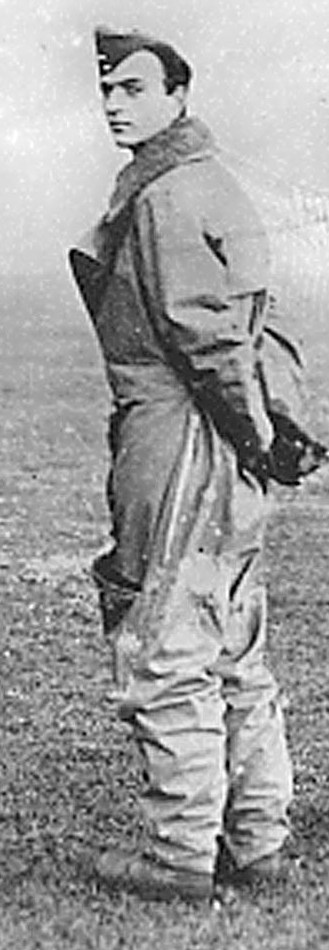
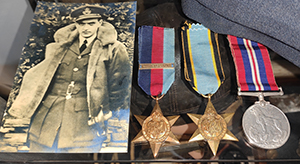
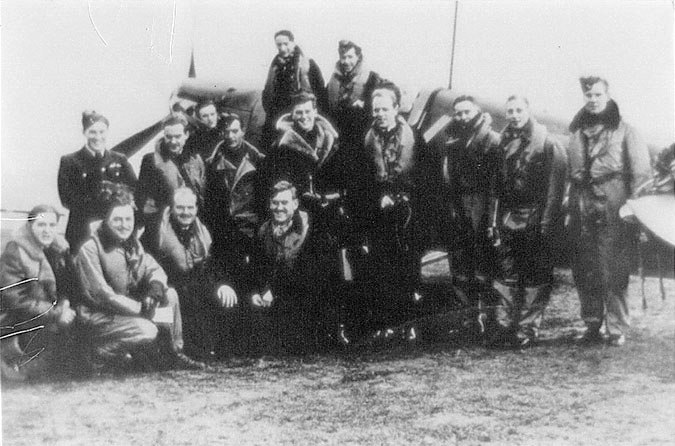
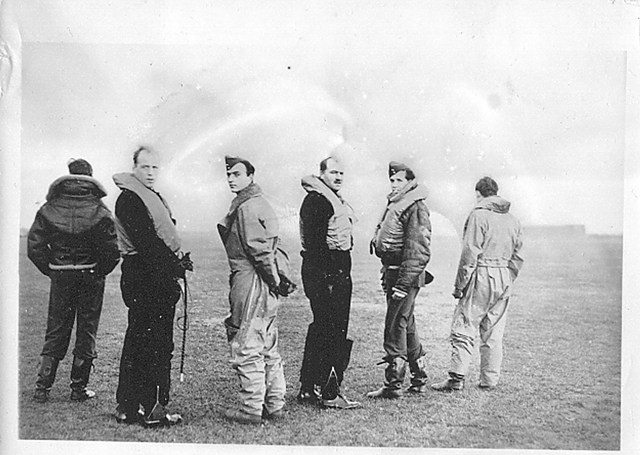
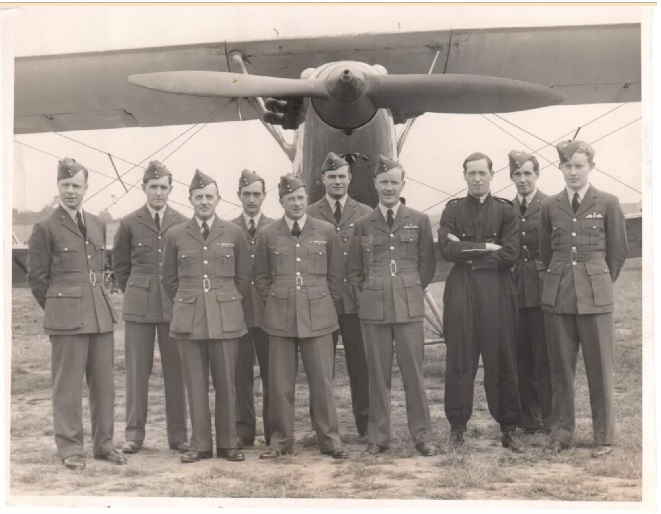
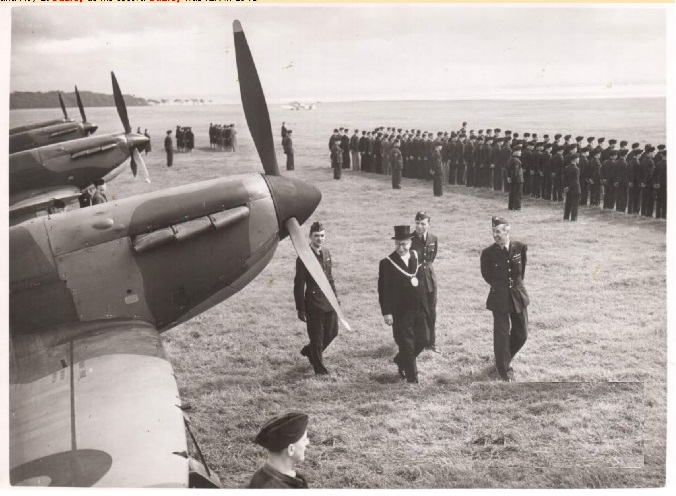

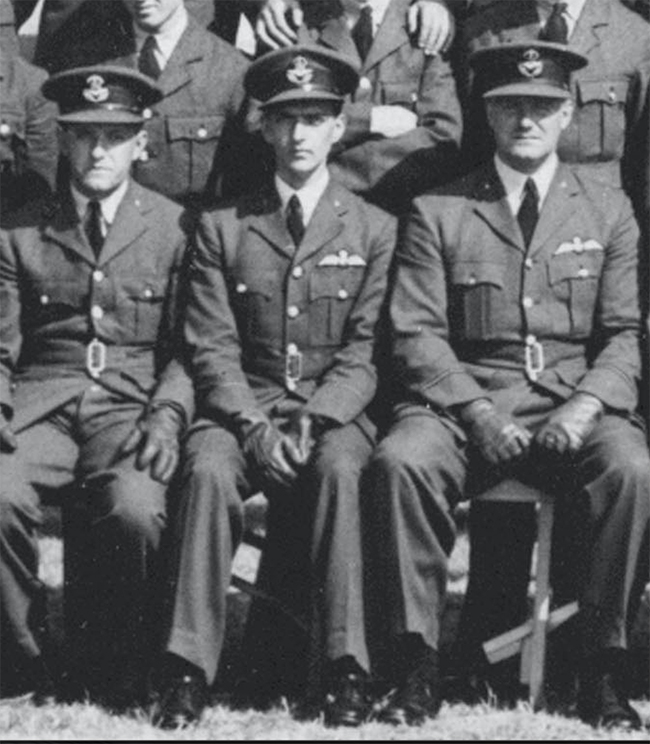
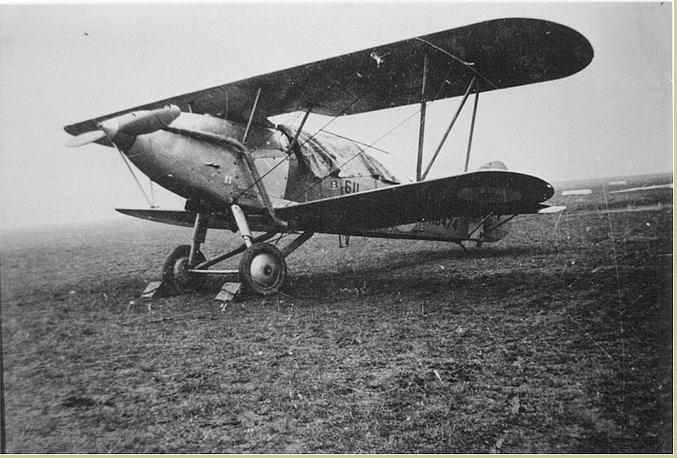 Hawker Hart of 611 Sq. at Speke Aerodrome Liverpool
Hawker Hart of 611 Sq. at Speke Aerodrome Liverpool